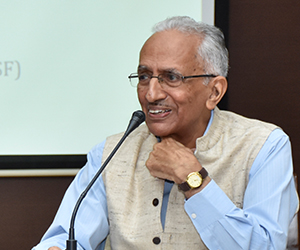“Today, we mark not merely the end of a problem, but the beginning of a new future.” Thus spake the Prime Minister on August 3, after the Naga Peace Accord was signed in New Delhi. The terms of agreement were not released – only the framework was outlined. According to Kiren Rijiju, Minister of State for Home, it may take about three months to finalize the exact terms of the agreement. Nevertheless, according to sources, the accord seeks a “lasting solution” to the Naga problem.
It is worth recalling that a suspension of operations agreement was signed with the National Socialist Council of Nagaland (Issac-Muivah group) as far back as 1997. About eighty rounds of talks were held during the intervening period at different places which included Bangkok, Paris, Zurich and Geneva. There were prolonged negotiations because the Naga rebel leaders insisted on recognition of their sovereignty and demanded integration of the contiguous Naga-inhabited areas of the adjoining states into what they called Nagalim (Greater Nagaland). The Government of India could not agree to the concept of Naga sovereignty as different from sovereignty of Indian people, and it was not prepared to redraw the geographical boundaries because of the intense opposition by the neighbouring states, particularly Manipur. And so, the talks went on and on. Some of our interlocutors, like Padmanabhaiah, also never showed any sense of urgency with the result that the talks meandered. R.N Ravi, a thorough professional, insisted on and managed to clinch the issue. The agreement is no doubt historic, but we have to keep our fingers crossed until such time as the details are worked out and those are also endorsed by both the sides.
We have to remember that there have already been three agreements with the Nagas during the last about sixty years that the insurgency has been going on. The first Naga People’s Convention held in 1957 demanded that the Naga Hills district of Assam and the Tuensang Frontier division of North-East Frontier Agency (NEFA) be merged into a single unit. The demanded was conceded and Naga Hills Tuensang Area (NHTA) was formed the same year. The third Nagas People’s convention held in 1959, demanded the creation of a new state of Nagaland. This was also conceded, and the state of Nagaland was carved out on December 1, 1963. Peace, however, continued to elude the Hills.
There was yet another agreement in 1975 – the Shilong Accord. The representatives of Naga underground organizations conveyed their decision “of their own volition, to accept, without condition, the Constitution of India.” The underground leaders also agreed to deposit their weapons at “appointed places”. Another group of Naga leaders, which included Issac, Muivah and Khaplang, however refused to abide by the agreement and they formed the National Socialist Council of Nagaland (NSCN) in 1980, which has since been spearheading insurgency in the state.
The Accord signed on August 3, 2015 would be the fourth agreement in the series. Will it work? It should, by all the available indications. Government has shown extraordinary sensitivity to Naga sentiments. “The Government of India recognized the unique history, culture and position of the Nagas and their sentiments and aspirations.” The NSCN leaders have also shown great sagacity by not making an issue of adjoining Naga-inhabited areas being integrated with Nagaland. “The NSCN understood and appreciated the Indian political system and governance.”
There are nevertheless grey areas which would have to be taken care of. Firstly, Khaplang group of the NSCN is not part of the agreement and it is quite formidable. Its attitude would need to be watched. Secondly, there are other groups also who may have reservations. Muivah is a Tangkhul Naga of Manipur, and not all Nagas of Nagaland like him for that reason. Discordant voices are already being heard. Naga National Council has come out with a statement saying, “Nagas are not Indians and Nagaland is not part of India”. The NSCN (Khole-Kitovi) has also said that it has “nothing to do with the Naga peace accord”. Government would have to address their concerns.
The permanence of the agreement would depend to a very large extent on the Naga rebels surrendering their weapons. The two sides have agreed to set up a mechanism for decommissioning of arms. However, if that does not happen or if that happens very partially, the future would remain uncertain. Presently, the NSCN (IM) is running virtually a parallel government, collecting taxes, recruiting people, and issuing ahzas (orders) on various matters. They will have to stop all these illegal activities and join the democratic mainstream.
Muivah struck a note of cautious optimism. He promised that the Nagas would honour the accord, but went on to add that “challenges still remain”. These challenges or the hard realities would have to be faced. The Nagas will have to understand that their sovereignty is part of the broader Indian sovereignty and that in the kind of plural society that we have, people of diverse ethnic groups live not only in certain compact areas but also in areas having majority with a different background. As Dr. S. Radhakrishnan, then President of India, said while inaugurating the state of Nagaland, “Indian society has always been a multi-lingual, multi-racial and multi-religious one having a variety of racial ethnic groups” and that these groups, though diverse in origin, were united by a common purpose.
(The writer, a retired Police Chief, served in Nagaland for four years and has authored a book, Kohima to Kashmir)
Published Date: 13th August 2015, Image Source: http://thewire.in
(Disclaimer: The views and opinions expressed in this article are those of the author and do not necessarily reflect the official policy or position of the Vivekananda International Foundation)










Post new comment